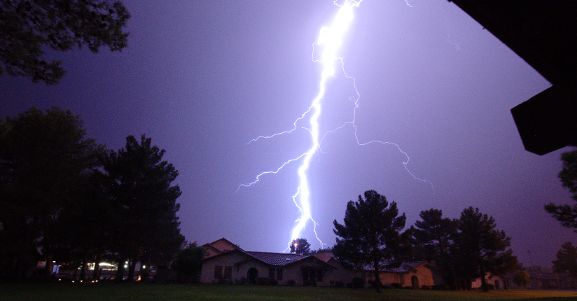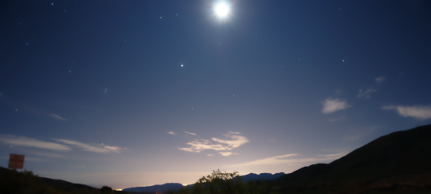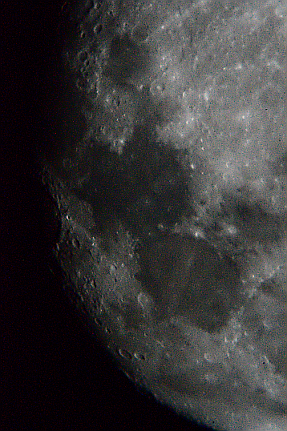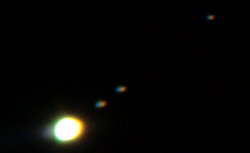Vegas
2011-09-28
I touched down in Vegas. Off the jetway my ears immediately fill with the fake tones of spinning slot machines. I hate this town, but it's where important family and good friends are and this will be the last opportunity to see some of them before I head South.
I had a new lens for my camera to play with, a Nikkor 10-24mm wide angle, and I had just read a good article on the use of wide-angle lenses from Ken Rockwell (http://www.kenrockwell.com/tech/how-to-use-ultra-wide-lenses.htm). I had a couple great opportunities for pictures while in Vegas. Mid-week a very large thunderstorm passed over the city, and I woke up around 3am to the thunder rattling the entire house. I grabbed my camera and from the porch began rapid-firing the shutter to hopefully grab something from the sky. Of the 500+ frames, about 8 of them had something in them, one of which turned out ok (the main bolt was blown out).
Earlier in the week Nathan had shown me his new telescope which immediately sent my picture-sense tingling – was there a way to hook up a Nikon to this? After some research, we had a plan. A T-ring adapter was required which is specific to the camera fitting the lens mount and allowing a few different types of connections to the telescope. The two most common are “Prime Focus” and “Projection”. Prime Focus connects the T-ring directly to the telescope in place of an eyepiece. Projection provides a container that you place an eyepiece into which then connects to the telescope. We chose the latter since this would allow more magnification and the ability to swap out different eyepieces depending on the subject being photographed. So up to Mt. Charleston we went. We found a nice turnoff next to the road that was past most of the houses on the mountain, which would keep headlight-blasting cars few and far between.
The tripod for the telescope was a bit underpowered for the weight of my camera on the back, which made focusing very difficult. The moon was easier to work with. I focused on the darker side.
After a failed attempt at Jupiter, we shot the moon a while more, but I had to try again. This time instead of the two of us trying to work on adjustment, Nathan showed me how to use the locater scope and it took me about 15 minutes to get Jupiter in my sights. I could see 4 of its satellites! Focusing took another 15 minutes.





